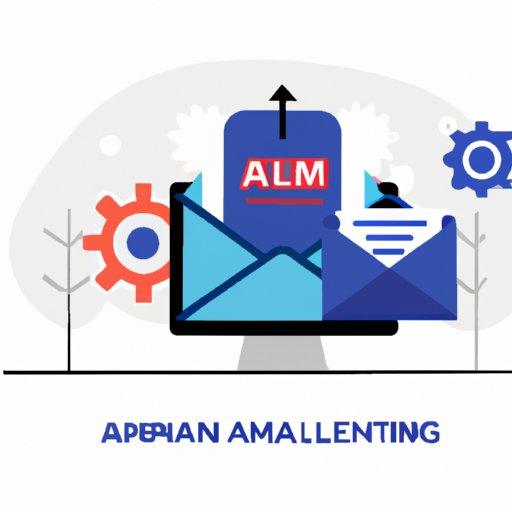Introduction
An automated email is a pre-written message that is sent out on a predetermined schedule or when certain conditions are triggered. Automating emails can be a great way to streamline communication and save time. In this article, we’ll explore the benefits of automating emails, the tools needed to set up an automated email system, how to design and create an automated email, tips for testing and troubleshooting automated emails, and best practices for managing automated emails.

Setting Up an Automated Email System
Before you can start sending automated emails, you need to set up your automated email system. This involves selecting the right tools and configuring them to automate your emails. Here are some of the tools you may need for automating emails:
- Email service provider (ESP)
- Customer relationship management (CRM) system
- Marketing automation platform
- Analytics software
Once you have selected the appropriate tools, you need to configure them to automate your emails. This includes setting up triggers, such as when a customer signs up for your newsletter, or scheduling emails to be sent out at specific times. You also need to create templates for your automated emails and integrate your ESP with other systems, such as your CRM or analytics software.

Designing and Creating an Automated Email
Now that your automated email system is set up, it’s time to design and create your automated emails. When designing your automated emails, it’s important to keep your audience in mind. Think about what they want to see in the email, and try to make the content as personalized and relevant as possible. Here are some tips to help you design an effective automated email:
- Make sure the subject line is attention-grabbing and relevant.
- Include a clear call-to-action (CTA).
- Keep the content short and to the point.
- Include images, videos, and other visuals to make the email more engaging.
- Include links to other relevant content.
Once you’ve designed your automated email, it’s time to create it. Make sure to follow your ESP’s guidelines for formatting and coding, and double-check for any errors before sending the email. You should also test the email to make sure it looks good on different devices and browsers.
Testing and Troubleshooting Automated Emails
Once you’ve created your automated email, it’s important to test it and troubleshoot any issues that may arise. Here are some tips for testing automated emails:
- Test the email on multiple devices and browsers.
- Check the formatting and make sure all the links are working.
- Send test emails to yourself and other team members.
- Measure the open rate, click-through rate, and other metrics.
If you encounter any issues while testing your automated emails, it’s important to troubleshoot them quickly. Start by checking your ESP’s documentation and support forums, as they may have solutions to common problems. If that doesn’t work, contact your ESP’s support team for assistance.
Managing Automated Email
Once your automated email system is up and running, it’s important to manage it properly. Here are some best practices for managing automated emails:
- Monitor your automated emails regularly and adjust them as needed.
- Review your analytics data to identify areas for improvement.
- Update your automated emails regularly to keep them fresh.
- Test your automated emails regularly to make sure they’re working correctly.
- Keep your automated emails compliant with applicable laws and regulations.
Conclusion
Automating emails can be a great way to save time and streamline communication. To get started, you need to select the right tools and configure them to automate your emails. You also need to design and create your automated emails, test and troubleshoot them, and manage them properly. By following these steps, you can make sure your automated emails are effective and successful.
(Note: Is this article not meeting your expectations? Do you have knowledge or insights to share? Unlock new opportunities and expand your reach by joining our authors team. Click Registration to join us and share your expertise with our readers.)
